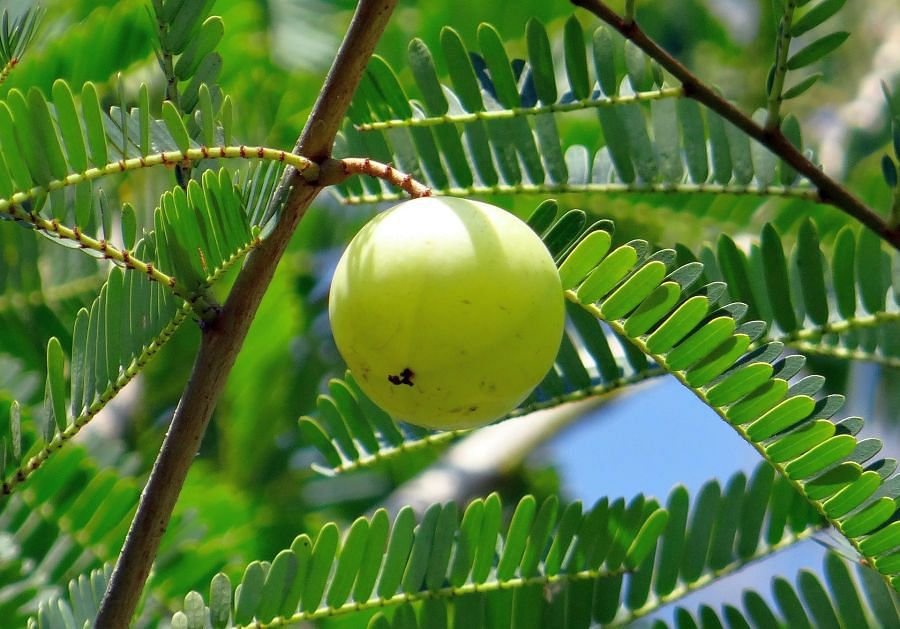
Gooseberry (amla or nellikai in South India) is commonly found in India and is packed with nutrients. It can be very sour in taste, but then therein lies the power of this humble berry.
In India, it is commonly used to make pickles and murabba (candied gooseberry). It is used to make chyavanprash, a thick ayurvedic tonic which is very good for health.
One of the main nutrients in gooseberry is vitamin C, which is an antioxidant, can help fight hypertension, reduce heart disease risks among other things. Thus, gooseberry benefits are manifold.
Good for hair:
Gooseberry is good for hair because it promotes hair growth and pigmentation. Amla helps in retaining the black colour of hair. It can also help in strengthening the roots and could help in containing hair loss and baldness. Amla has antioxidants that can keep a check on hormones and free radicals that can lead to bad hair.
In fact, amla is widely used in hair care products in South Asia.
Slows down aging:
Gooseberry is known to prevent hyperlipidemia, which is basically an excess amount of bad cholesterol in the body. Hyperlipidemia is considered responsible for premature aging. Gooseberry helps in slowing down aging by reducing the effects of free radicals in the body. Gooseberry is rich in antioxidants and vitamin C, both of which help reduce the effects of free radicals.
Good for immunity:
Gooseberry has vitamin A and C and these can help in building immunity. A study that was published in the International Journal of Pharmaceutics says that it has potent anti-bacterial and anti-inflammatory properties. According to ayurveda, intake of amla juice can increase white blood cells in the body. Having the proper level of white blood cells is important because they are the ones that help the body have a good immune system. It is also said that consuming amla helps in relieving cold and flu.
Diabetes control:
It is a known fact that gooseberry contains chromium, which can help in blood sugar control. It works by stimulating groups of insulin-secreting cells and this will naturally mean that blood sugar is kept in check in people who have diabetes.
Boosts appetite:
In India, in individuals who have a low appetite, it is common for them to consume gooseberry powder before having a meal. It is strongly believed that this works well in improving appetite.
Improves heart health:
Gooseberry powder is known to strengthen muscles of the heart and this, in turn, improves blood circulation in the body. It is also effective in keeping a check on the accumulation of cholesterol in the heart. Gooseberry is rich in iron and this helps the body produce new red blood cells.
Helps digestion:
Gooseberry is fibre-rich and this can help in clearing the intestinal tract and also help in bowel movement. The American Journal of Food Technology has found that gooseberry and its powder has the capacity to retain water. This helps in preventing constipation. Amla is also good for treating diarrhoea.
Diuretic properties and hydration:
Gooseberry has diuretic properties. A diuretic is a substance that increases the production of urine, which tends to flush out toxins, excess water and salts from the body. Removal of toxins also helps the body retain water and this aids in hydration.
Good for the eyes:
Gooseberry juice is rich in vitamin A, which is good for eye health. Gooseberry is also rich in carotene, which is known to reduce chances of getting cataracts while improving eyesight.
Apart from the above benefits, eating gooseberries or drinking its juice also helps in enhancing liver health, helps the body absorb calcium and enhances metabolic activity.
Gooseberry recipe:
-- One of the healthiest ways is to have a couple of spoonfuls of amla juice diluted with a bit of water on an empty stomach as the first thing in the morning. Nothing should be consumed for about half an hour after drinking this juice.
-- Dried and salted amla is freely available in the market. A few small pieces is a good solution for acidity.
-- Round amla pickle is a great accompaniment with south Indian meals. They have to be boiled or steam cooked for a few minutes and until they become soft. Each gooseberry should then be cut into small pieces and the seed can be discarded.
In a kadai, put a small amount of oil and add mustard seeds. When they begin to crackle, chilli powder, turmeric powder and asafoetida and keep turning it till the oil begins to separate.
Once done, it can be stored in a jar and should preferably be refrigerated.